Sri Lanka's Cultural Triangle: A Guide
Located in the heart of the island nation that is Sri Lanka, you'll find the Cultural Triangle. In truth, the entire country has oodles of culture, but in this neat patch of land it is particularly concentrated.
Thanks to its diminutive size, Sri Lanka is easy to explore; you can be surfing in the morning and on an elephant safari by afternoon. But in the Sri Lankan Cultural Triangle it's even quicker and easier to tick off the tourist experiences. Not that you should rush your time here - we recommend a few days to really absorb the magic of this unique area of Sri Lanka.
Here we take a look at things to do in the Cultural Triangle of Sri Lanka, highlighting why you are likely to want to add this holiday trip in Sri Lanka to your must do list.
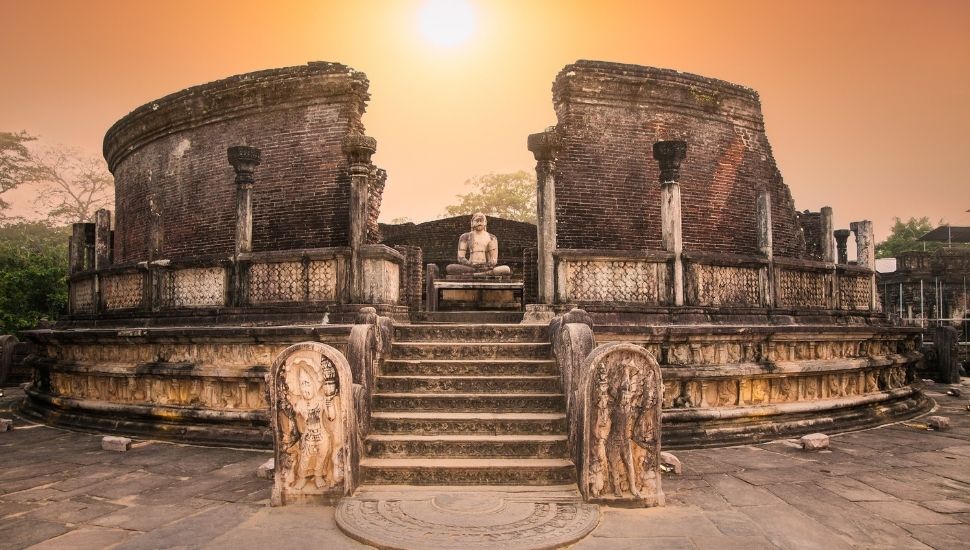
What is the Cultural Triangle?
Located in north-central Sri Lanka, the Cultural Triangle is a zone of dusty plains, rocky outcrops, and crumbling ruins. It was once the heartland of Sinhalese royalty, and as such is dotted with restored temples and ancient ruins.
The Cultural Triangle is so named because it forms a triangle, comprising Anuradhapura to the north, Polonnaruwa to the east and Kandy to the south-west. But there are other treasures to enjoy inside the triangle, including Mihintale, Ritigala and Dambulla.
Many of Sri Lanka’s cultural highlights can be found in this region with no less than five UNESCO sites, located within the Cultural Triangle.
As mentioned, rushing around 'bagging' temples might not be the best approach: we say, take your time to enjoy the details and atmosphere of this incredible area of Sri Lanka...
Sri Lanka’s crumbling grandeur
Rajarata - which means King's Land in Sinhalese - is found in the northern part of the Sri Lanka Cultural Triangle. Some of the ruins of Rajarata date back more than 2,000 years.
To the triangle’s south lies Kandy, capital of the Kandyan empire which stood from the 14th to the 19th centuries.
The empires of Kandy and Rajarata were not directly connected, although they were both steeped in Buddhism.
Anuradhapura and Polonnaruwa
Former capitals of the Sinhalese kingdom, Anuradhapura and Polonnaruwa, are must-visit destinations while in the Cultural Triangle of Sri Lanka.
Foremost, historically speaking, is Anuradhapura, which was built in 380 BC and abandoned around 1,200 years later after being invaded by the Chola empire of southern India.
It was during the peak of this kingdom that Buddhism became the established religion in the country.
Dense jungle enclosed the ruins of Anuradhapura until the 1800s, when it was cleared of vegetation.
The vast network of 40 square kilometres of ancient Buddhist temples, monasteries, and shrines means there’s plenty of places to visit in Anuradhapura.
While not as old or as large, Polonnaruwa - Sri Lanka's second ancient capital - is in a better state of repair.
Both enjoy UNESCO World Heritage status.
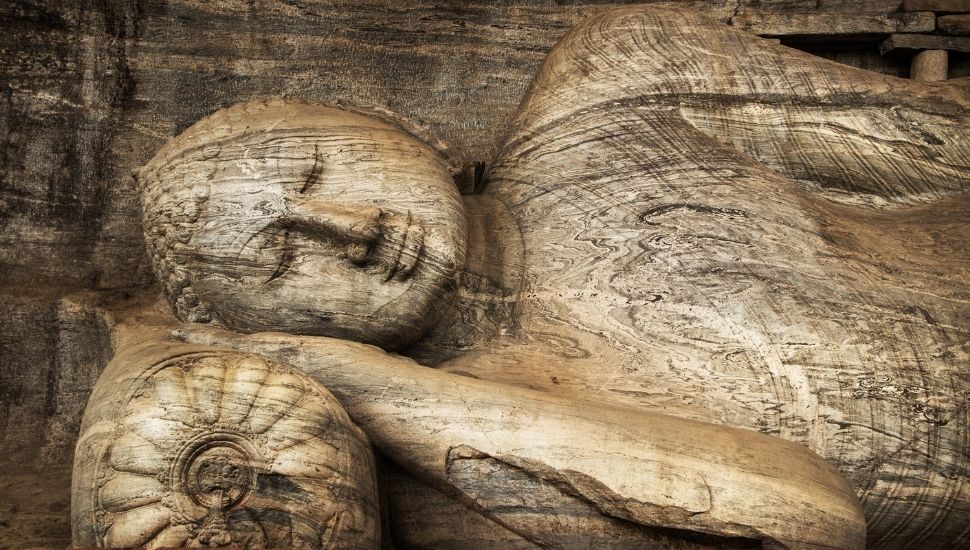
The detailed sculptures of the Sri Lankan Cultural Triangle
The Cultural Triangle is abound with sculptures, most of them found in the structure of the temples and dagobas.
During your visit of the Cultural Triangle of Sri Lanka, you'll see Buddhas in various meditative poses, along with moonstone entrances, elephants and apsaras.
Majestic outcrops
The Cultural Triangle of Sri Lanka is peppered with alluring rocky outcrops, set among the dry plains and vegetation and offering sublime views.
A prime example of these is found in Sigiriya, where a Sinhalese fortress once stood. Another is at nearby Pidurangala, offering views of Sigiriya.
What are the must-see sites of the Cultural Triangle of Sri Lanka?
With so much to see and do within Sri Lanka’s Cultural Triangle, it’s hard to know where to start on planning your Sri Lankan trip to see these amazing ancient sites.
Some of the must-see sites of the Cultural Triangle include:
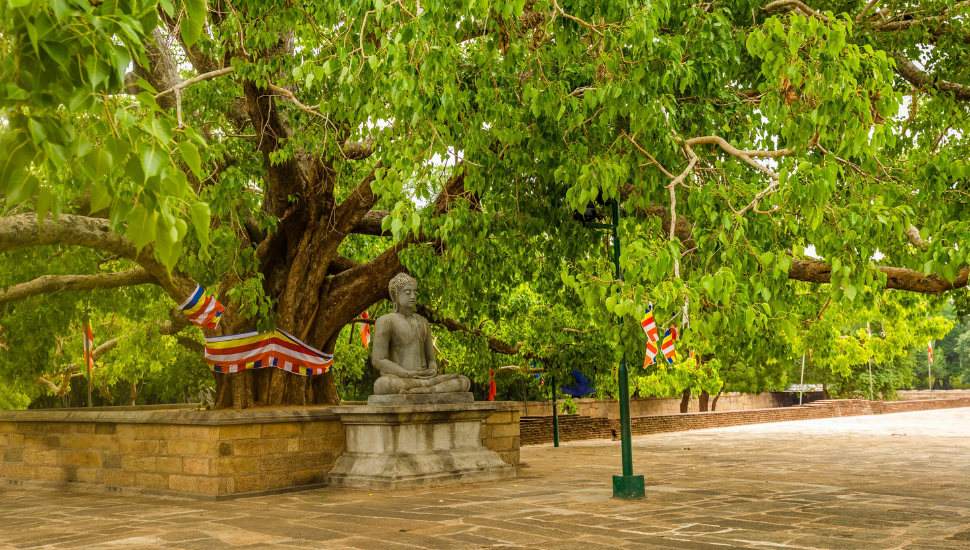
The sacred Bodhi Tree in Anuradhapura
Sri Maha Bodhi is a tree said to have been grown from a cutting of the Bodhi tree under which Buddha became enlightened.
For thousands of years this tree has been the most sacred in all of Sri Lanka, inspiring all manner of offerings and rituals.
It is believed to be the oldest human-planted tree in the world.
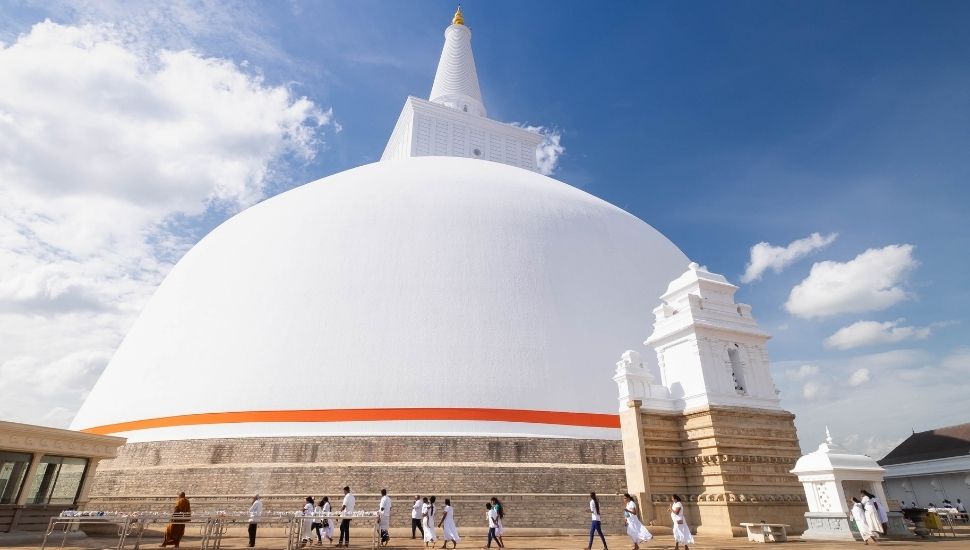
Towering dagobas of Sri Lanka
Anuradhapura is home to three vast stupas called 'dagobas'. The oldest dagoba is believed to be nearly 3,000 years old. For comparison, the pyramids at Giza are around 4,600 years old and 90m higher (46m vs 130m).
The Ruwanweliseya stupa is one of the largest stupas or dagobas, which is in the heart of the beautiful heritage city of Anuradhapu. Lankarama Dagoba, a stupa built by King Vattagamini Abhaya around 1st century BC, houses stone-pillar ruins around the main stupa, whilst Abhayagiri Dagaba.can be found within the major monastery site of Abhayagiri Vihāra.
The dagobas of Sri Lanka were built to house ancient relics of the Buddha, and as objects of spiritual contemplation.
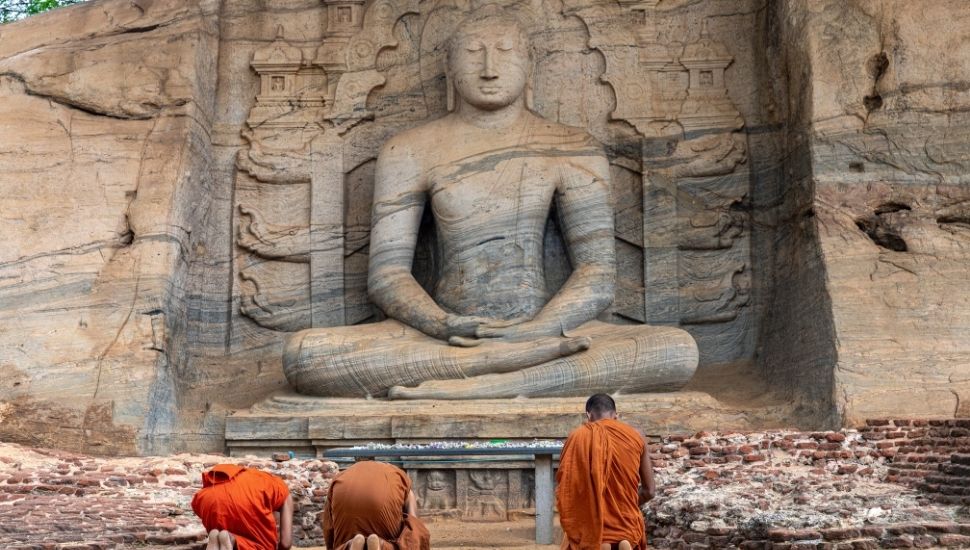
Polonnaruwa’s Gal Vihara
The Gal Vihara or "rock monastery" was originally named Uttararama "the northern monastery". And Is the most visited monument in Polonnaruwa,
The main feature of Gal Vihara is the four images of the Buddha that have been carved on a single, large granite rock face.
Considered to be among the best examples of the rock carving and sculpting arts of the ancient Sinhalese, two of the statues depict Buddha seated, another one standing.
The largest statue, which is more than 46 feet (14 m) long depicts Buddha reclining, slipping into the final state of Nirvana. It is known as Parinibbana in the Pali language, and it is one of the few statues done in this manner.
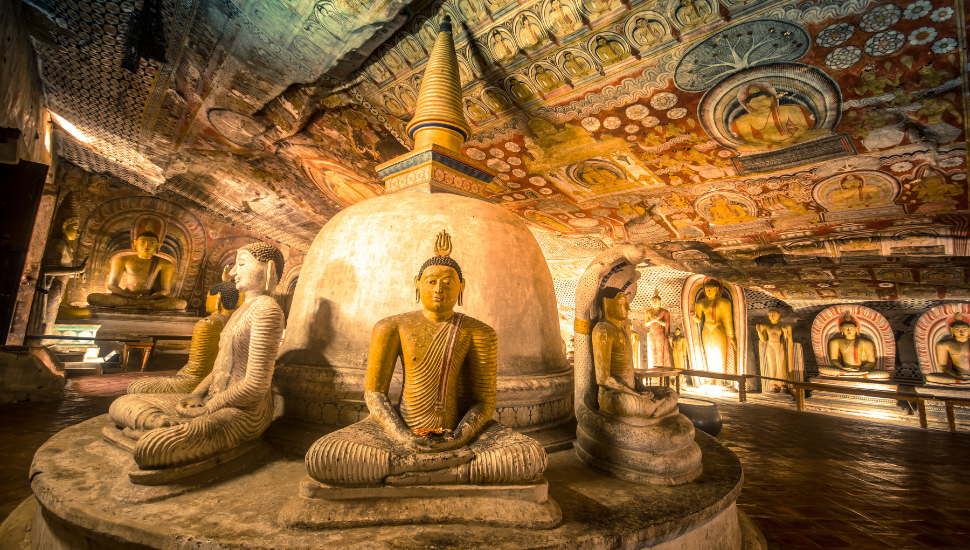
Dambulla cave temple
The Cultural Triangle is also home to various cave temples, the most famous of which is Dambulla.
Also known as the Golden Temple of Dambulla, Dambulla is the largest and best-preserved cave temple complex in Sri Lanka. The rock towers 160 m over the surrounding plains.
There is a climb of 364 steps to reach the Dambulla temple – Beware of the monkeys en route!
Housing 153 Buddha statues, including a giant resting Buddha, three statues of ancient kings, and four other statues including those of Vishnu and Ganesh, the Dambulla cave temple also boasts many exquisite wall paintings showing scenes from Buddha's life.
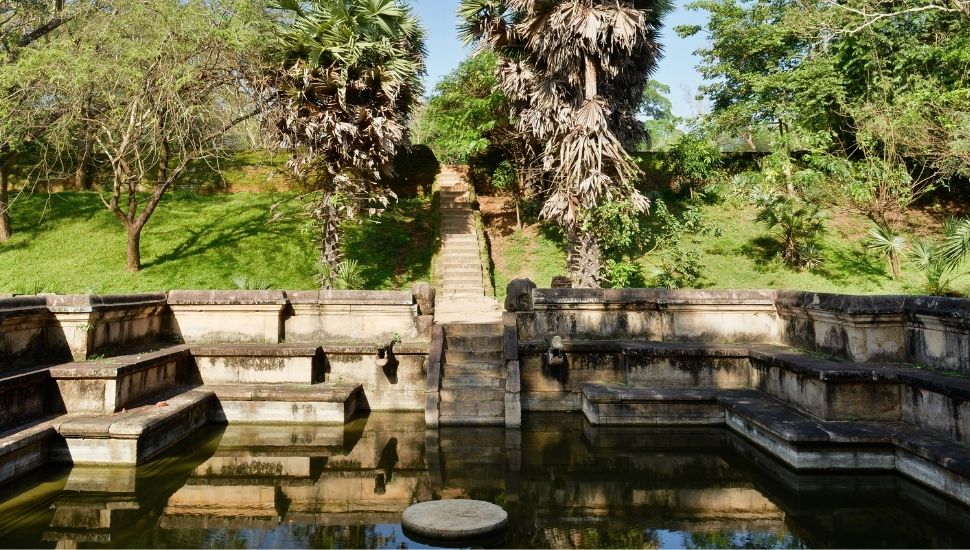
Reservoir 'tanks': Sri Lankan kings and their tanks
Laid across Sri Lanka is a network of water tanks - or reservoirs - connected by canals and watersheds.
Many of the Sri Lanka’s kings insisted on constructing irrigation tanks in an effort to generate wealth for the country and improve the lives of its people. The capacity and prominence of ancient kings was assessed by the number of irrigation tanks they had constructed.
These cascading systems were developed around 2,400 years ago to ensure the island's rainfall was evenly distributed, making it possible to cultivate rice even in zones prone to water scarcity.
The tanks were built using a 'cascading' system that used the natural incline and topography of the land to distribute the precious water.
Alongside large, practical water tanks, there are ornate ones created for bathing - one of which you'll find at Polonnaruwa.
There are also smaller tanks at Sigiriya, many of which are covered in stunning pink-purple lotus flowers.
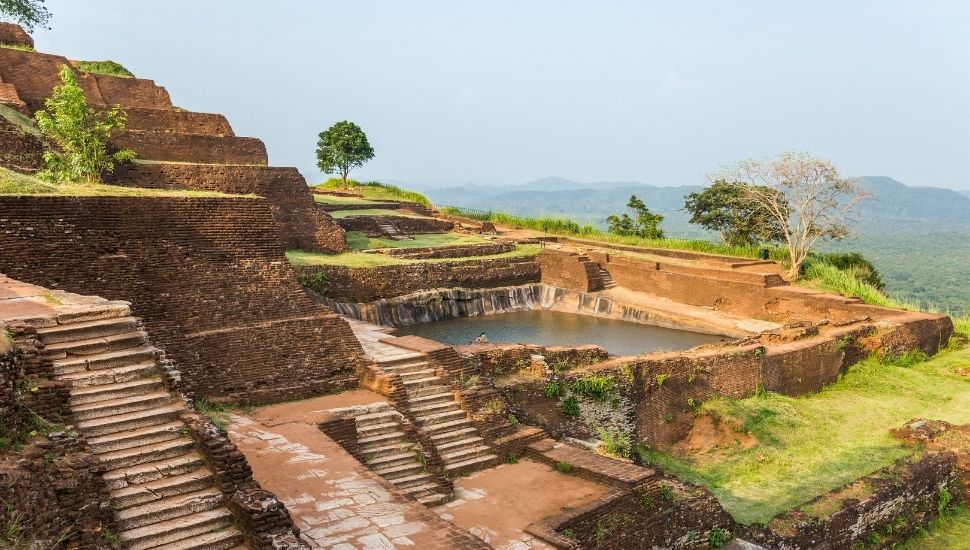
Sigiriya Rock: Sri Lanka’s Lion Rock Fortress
Sigiriya or the Lion Rock is an ancient fort located between the towns of Dambulla and Habarane in the Matale District in central Sri Lanka.
A UNESCO World Heritage Site, the rock fortress dates back to the reign of King Kasyapa (477-495 AD), who chose this site as his new capital, and built an impressive palace right on top of the rock column, accessible only through the mouth of an enormous carved lion.
Sigiriya Rock consists of a citadel with ruins of palaces, the Lion Gate, gardens, moats, the Mirror Wall, and many beautiful frescoes.
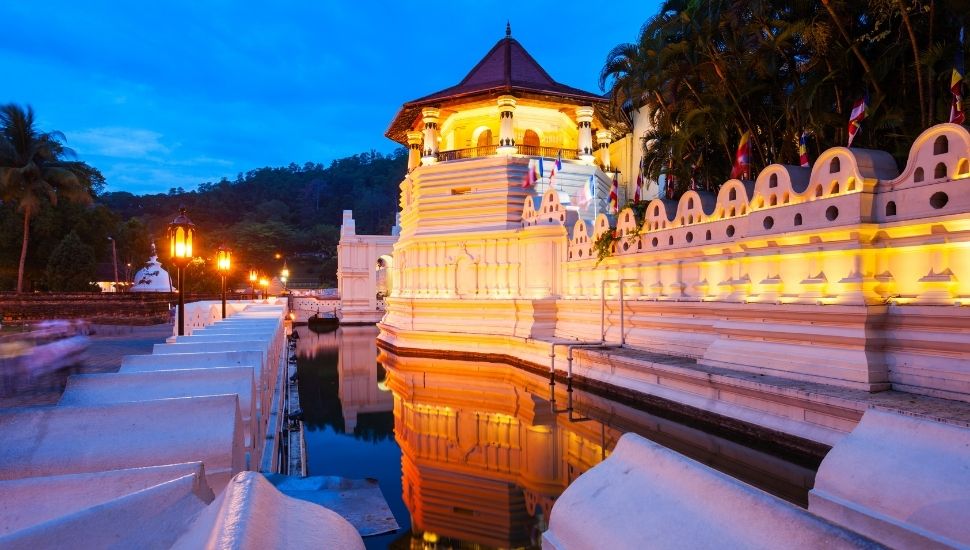
The Temple of the Tooth
Located in the royal palace complex of the former Kingdom of Kandy, you'll find the famous Temple of the Tooth, filled with paintings and sculptures of the Buddha - and of course, the sacred tooth relic.
The temple and Kandy play a central role in the Esala Poya Perahera festival - one of Sri Lanka's most famous.
The Kandy Esala Perahera is a week-long festival which is considered one of the oldest and most extravagant of Sri Lanka’s Buddhist celebrations.
Observed in July or August, the festival is also known as the Festival of the Tooth and pays homage to the sacred tooth relic of the Buddha.
Thousands of Sri Lankan’s flock to the central city of Kandy to watch and take part in the event, which features processions of lavishly dressed dancers, drummers, fire jugglers, and musicians wearing elaborate traditional costumes, and elephants adorned with flamboyant garments and gems.
When is the best time to visit the Cultural Triangle of Sri Lanka?
The best time to visit Cultural Triangle in Sri Lanka is during the dry months of January to March when the days are warm and full of sunshine. Temperatures at this time are pleasant enough to be out all day exploring the sites.
The months prior to January tend to be humid with the monsoon rains and after March temperatures rise to 30°C, making sightseeing less comfortable.
Planning your trip to the Cultural Triangle between January and March is also ideal if you are looking to combine a tour of the Sri Lankan Cultural Triangle with a beach break in the West Coast or South Coast of the country. Late November to April is said to be the best time to visit these coastal areas.
Start out early on your visits to the Cultural Triangle ancient highlights and you will miss the worst of the heat as well as the crowds. The early morning light is also better for photography.
Pilgrimage across the Cultural Triangle
Many Sri Lankans embark on pilgrimages across the Cultural Triangle, moving between temples and key religious sites. As a foreigner it may be possible to join such a pilgrimage, but it is best done with a local guide - and wearing respectful clothing. You should never enter a temple with bare shoulders, lower legs, or wearing footwear.
Get a Quote